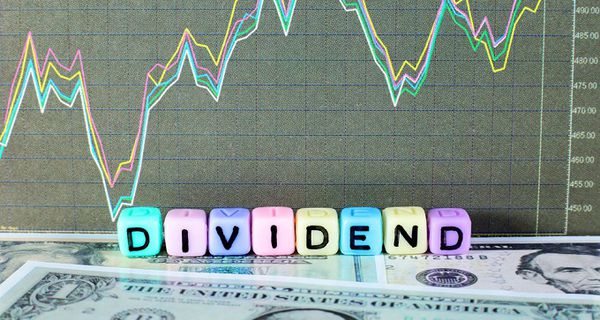
It is always good to learn from your mistakes: it is much less painful to learn from someone else’s. When I first started investing I was guilty of a number of beginner mistakes, although some seem so ridiculously misguided that I think labeling them as “beginner mistakes” is an insult to beginners. It wasn’t that I selected poor companies, I actually had a very good success rate with my picks and a number of big winners (the rally that started in March 2009 was a significant contributor as well). My main sin was over-eagerness: I was soaking up as much information as I possibly could about investing and was rushing to apply it in the real world. Thankfully I didn’t lose money in an overall portfolio sense due to these errors but it did hurt my overall return. Today I lay out three of my errors so that any novice investors who find this site can avoid the mistakes that I made when I first started out.
In “How To Build A Dividend Growth Stock Portfolio” I discussed the importance of not letting commission costs cut into your returns with the goal being to keep costs to less than 1% of every trade. I followed this rule with my early purchases of Coca-Cola (KO), Johnson & Johnson (JNJ), and Apple (AAPL). I bought those stocks with the intention to hold for at minimum one year (incredibly, given my level of investing discipline at the time, I actually accomplished that goal). However my desire to fill my portfolio with more growth stocks resulted in purchase sizes of rapidly decreasing amounts, my personal investing version of a slippery slope.
I went from bending my rule with purchases in the $800s to breaking it with purchases in the $400s (these were not DRIPs) and finally, in an act of investing lunacy, I purchased a single share of Qualcomm (QCOM) at about $40 and two shares of Immucor (BLUD) at $20 a share…when my commission cost was still at the $10 level! Those stocks would have had to put up returns of 20% for me just to break even: to this day I cannot explain why I made those purchases. The lesson here is clear: do not sabotage yourself by letting commission costs slice into your returns.

Many successful investors talk about their “investing thesis” when explaining why they are purchasing a stock. If you read the stock analysis articles I collected in Monday’s roundup you’ll see that the bloggers who wrote the pieces don’t just look at numbers, they also articulate what kind of return they expect to get from an investment, what operations the company will conduct to generate those returns, and also what their exit strategy would be for leaving the position. Dividend Monk’s theses are particularly worth reading and re-reading. The exit strategy is one of the biggest obstacles for new investors to get their head around, yet it is absolutely a crucial part of the thesis. Without a solid thesis that includes a defined exit strategy you can find yourself leaving positions you should hold into and holding onto positions you should leave.
Case in point was my first go around with Johnson & Johnson. Along with Coca-Cola it was one of the two inaugural members of my portfolio. I purchased it because it was a solid dividend paying blue chip with slow but steady growth. I ended up selling it a little over a year later because I wasn’t impressed with its performance. But wait, what was I really expecting? It had appreciated a little bit in price and had paid its reliable, Dividend Champion caliber dividend. The company had had to issue some product recalls but nothing had fundamentally changed with the way it did business. In other words based on my original thesis there was no reason for me to sell the stock. I do so anyways because its price returns weren’t impressive next to what I was getting from stocks like Apple, Coach (COH), and Guess (GES). Today those last three stocks are no longer in my portfolio while Johnson & Johnson is one of my largest holdings.
Here is the lesson: yes, I made good money from my growth stocks. However that was no reason to ditch my position in a large blue-chip dividend stock that I purchased for having those exact qualities. You can combine both types of stocks in your portfolio, you just need to keep in mind what role each position you have is supposed to fill. Never sell a stock when there has been no change to your fundamental thesis and you cannot improve on what it offers through purchasing another stock of a similar type. Furthermore you should definitely never sell a large steady growth Dividend Champion just because its stock price can’t grow at the same right as the hottest tech or retail stocks can!
My final “mistake” partially depends on your sense of perspective. While I have always considered myself a long-term investor my early actions were a mix of long-term and short-term thinking…the shorter the term the less successful they were. As Christmas approached at the end of 2010 my portfolio, which was worth less than $10,000 at the time, was sitting on some nice gains. I decided to “take some money off the table” and use it to buy that year’s Christmas gifts for the family. The gifts weren’t overly expensive or anything however not holding onto those shares of Coca-Cola, Apple, Guess, and Coach was!
I only sold part of each position in order to raise the desired amount of cash however I would have been better off purchasing the gifts using cash from my checking account at the time (which was at a more than adequate level). I had to pay taxes on my capital gains and then took the proceeds to purchase what were depreciating assets (sentimental value aside). I discussed the downside of purchasing things with extra cash instead of investing them in “Two Different Ways To Spend $4,000-$6,000”. If I had held on to those shares the combined dividend return and price appreciation (especially with Apple) would have more than offset the money that I would have instead taken out of my checking account to buy the gifts with. Hindsight is 20-20 right?
I was lucky when I started investing in the middle of 2009. The market was recovering strongly from the 2008 financial crisis and that rising tide probably saved me from making the kind of mistakes that you hear about where someone’s entire principal is wiped out. I did do myself the favor of trying to educate myself though and it was through the basic lessons I learned from books like The Motley Fool Investment Guide that steered me towards companies that beat the market while I held them. That I cut into my returns by not paying attention to commission costs, my investment theses, and selling to raise discretionary cash was my own fault.
If I had avoided those mistakes I would have had probably 10%-15% more capital then I have now with which to build my dividend growth stock portfolio (affectionately known as the PIG). Hopefully you can learn from my mistakes. Feel free to share some of your own epic errors in the comments section or head over to the Motley Fool Discussion Boards to read some truly disastrous tales of investing woe.
